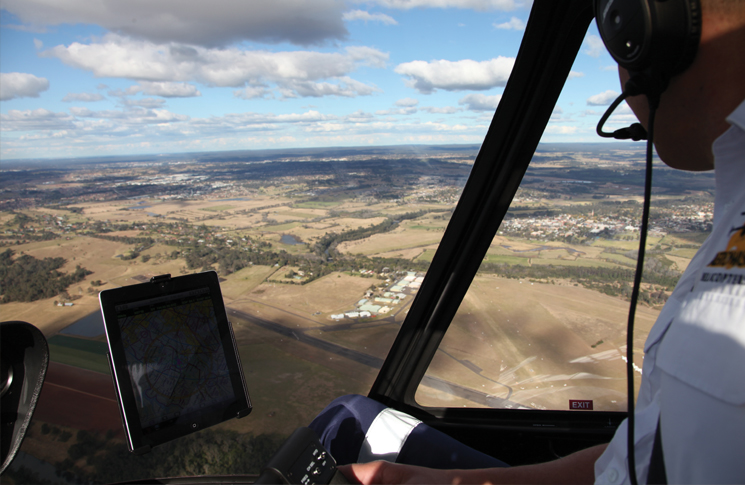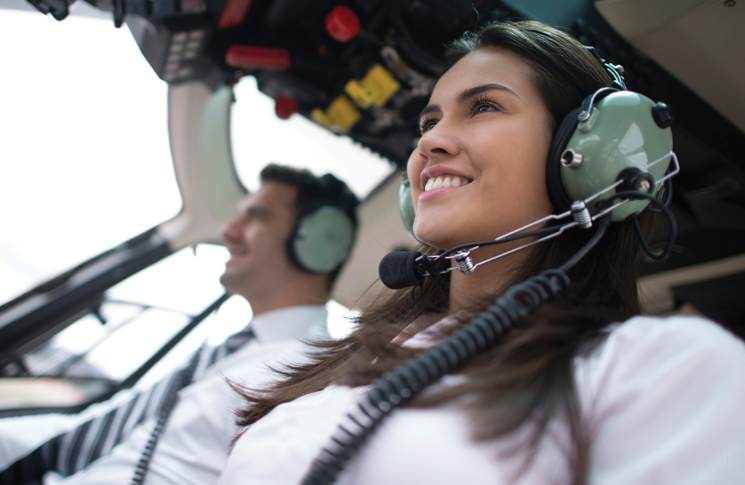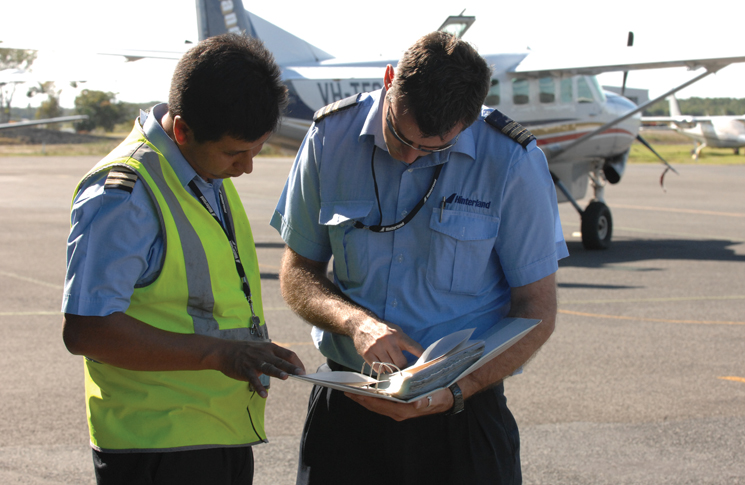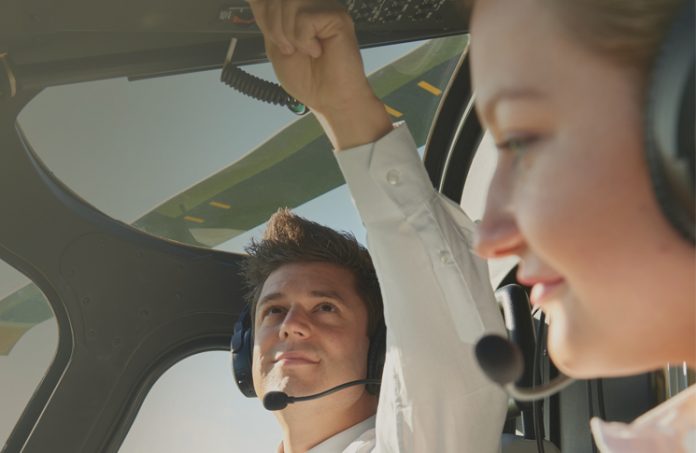by Nick Stobie
Almost all Australians are familiar with the Transport Accident Commission’s campaigns against drink driving. They’re prolific, confronting and by many metrics very successful at educating the public about the risks of alcohol and driving.
Since 2003, one line has endured in their campaigns: ‘Just a little bit over’. It targets the misconception that being ‘just a little bit over’ the blood alcohol concentration (BAC) limit of 0.05 per cent is acceptable, highlighting the assumptions and impaired judgement that might be present in deciding if you’re sober enough to drive.
Aviation, by contrast to the automotive world, has a less prolific problem with alcohol. The risk is well managed by organisational programs, and much stricter conditions on BAC and consumption of alcohol in the eight hours leading up to duty mean that pilots rarely, if ever, must assess their level of inebriation. But I, like many pilots, have heard the phrase ‘just a little bit over’ used to justify another transgression: exceeding maximum take-off weight.
The tale goes that a young and relatively inexperienced pilot has been asked to conduct a flight, and diligently completes a weight and balance calculation which shows him or her to be ‘just a little bit over’ maximum take-off weight. The aircraft has already been fuelled and the payload ‘has to go today’, so they wander over to the business owner (who also happens to be the chief pilot) and ask for some guidance. Looking at the neat weight and balance sheet, the owner confirms that the aircraft is indeed ‘just a little bit over,’ but quickly deflects: ‘It’s a really cool morning, so she’ll climb really well. And the runway is more than double the length you need. Besides, I’ve flown this plane hundreds of kilograms overweight before—we do it all the time.’
Now the owner hasn’t exactly lied. All those deflections are, in their own right, true. It is a cool morning and performance-wise the aircraft may have absolutely no trouble exceeding the required climb gradient. The runway is long enough, even for an overweight take-off. The owner has often flown the plane overweight before, and both they and the aircraft have lived to see another day. If all these things are true, then what’s the harm in going ‘just a little bit over?’

Delving into the technicalities
When I originally penned this article, I envisaged it as a technical one. There are so many forgotten complications of flying overweight and understanding these does make one appreciate why the limits exist. Take-off weight limits are set by considering a series of constraints. Most pilots understand that performance is one of these constraints, but it’s the non-performance limitations that are often overlooked.
I could reiterate the performance constraints we all know about. More weight means more lift, which also means more drag. More drag means less excess power is available to accelerate or climb the aircraft. In heavily overpowered aircraft this isn’t an issue on its own, but for light twins flying overweight quickly eats into the already lacklustre single engine performance that might be available. A heavier aircraft needs a longer runway to take-off and land, as well as having a higher stalling speed.
I could demonstrate the mathematics of flying overweight. It’s a relatively simple conclusion that this maths comes to, and it is that kinetic energy at the stall speed increases quadratically with weight. Put simply—if you double the weight, you’ll have four times as much energy on board at the new (higher) stalling speed. Aircraft are unlikely to get airborne at a whole 100 per cent over maximum take-off weight (MTOW), but this example is just as plain when we think about going 10 per cent overweight. Ten per cent overweight equates to a 21 per cent increase in kinetic energy at the stalling speed.
In both normal and emergency situations, your aircraft is designed to handle only a certain amount of kinetic energy. Brakes convert energy into heat, and once brakes reach a certain temperature, they lose effectiveness or cause tyres to burst and deflate. Your undercarriage is also designed to absorb a certain amount of energy from the force of landing. By forcing it to absorb more energy you reduce the margin available for a hard landing. In an emergency or forced landing, excess energy must be distributed. Impacts are outstanding ways of using kinetic energy to bend metal, rupture fuel tanks, deform fuselages and break bones. That extra 21 per cent might really be the difference between a dent in the wing and a ruptured fuel tank followed by fire.
I could tell you about how flying above MTOW delves you into the unknown, with handling characteristics declining and a narrowing centre of gravity range leaving you uncertain as to if your aircraft can handle what you’re throwing at it. Higher operating weights often preclude operating at forward centre of gravity ranges, and without approved data above MTOW you’ve got no way of knowing how to load the aircraft.
I could tell you about the longer-term effects of flying overweight on aircraft. Fatigue life is defined by stress-cycle curves. Higher amplitude loads (more weight) change a metal’s behaviour over time, often bringing them much more rapidly towards limits and ultimate failure. Parts wear quicker, with items such as brakes and tyres forced to work harder on every take-off and landing. Climbs are longer, leaving the engine in a high temperature state for longer. As much as it won’t complain at the time, your aircraft feels the effects of every extra kilogram.
Going over my drafts, however, I realised that none of these are the cause of pilots flying overweight. They are all consequences and they’re individually small consequences at that. You could fly hundreds of flights ‘just a little bit’ overweight and escape every single one without incident. There are plenty of ATSB reports involving overweight aircraft, but often the conclusion is that the accident sequence would have unfolded in the same way even if the aircraft had been appropriately loaded.
A very recent example of this is VH‑ZCR, a Beechcraft King Air which lost control and collided with terrain departing Essendon Airport. It was 4.2 per cent above MTOW, but the ATSB found that an incorrect rudder trim setting was likely to blame. The report noted: ‘ZCR’s overweight condition was unlikely to have contributed to the likelihood of the accident occurring or to the severity of the outcome of the accident.’1 In the absence of anything else, the consequences of flying overweight are often insignificant at the time.

Consequences
Going that ‘little bit over’ the BAC limit of 0.05, like many limits, isn’t entirely black and white. Decreased reaction time, impaired judgement, overconfidence, drowsiness—they share the characteristics of exceeding MTOW in that they are a continuum. Drivers don’t go from being 0.049 per cent to 0.05 per cent and instantly become an uncoordinated mess, just like an aircraft doesn’t stop flying the moment it flies 1 kg above MTOW.
The statistics on drink driving support this. Since 1997, Victoria Police have recorded more than 75,000 charges of drink driving. Yet the number of drivers who lost their lives with a BAC above 0.05 per cent during this period tends to be somewhere in the range of 25 to 50 per year.2 Even on charges vs. deaths alone, you could argue that there’s a fair probability you’ll survive drink driving. When we consider the fact that police can’t catch every single instance of drink driving, this contention gets even more pronounced.
Speeding shares this same trend. Despite the easily demonstrated consequences of even being slightly over the speed limit, recorded accidents from speeding are but a fraction of the frequency of tickets issued or true violations committed. You only need drive to work to observe this—speeding continues (both wilfully and inadvertently) to occur around you and yet you probably didn’t witness any accidents on the way.
None of this is to say that the dangers of drink driving and speeding aren’t valid. Our still significant road toll quite clearly demonstrates this. Every system has some element of risk, but risks imposed by wilful violations should never be accepted. The TAC’s Towards Zero campaign has focused on the reality that no road deaths or injuries are ‘acceptable’. Nonetheless, the fact that most instances of speeding or drink driving escape serious (death, accident or even getting caught) consequences is arguably to blame for why they continue to occur. The same can be said about flying overweight; most flights escape immediate consequences and so some pilots and operators continue to fly overweight.
Pilots and operators know that overloading an aircraft isn’t something that improves safety margins. We know the impact it has on performance, and although we might not fully understand the more technical implications, we know they’re negative ones. No pilot overloads an aircraft and then thinks: ‘This will make my flight safer.’ Despite all of this, it continues to be an accepted practice within some circles of aviation, and it’s this acceptance that is both the cause of, and the danger to, aircraft flying overweight.

Normalisation of deviance
Flying overweight, speeding and low-range drink driving are examples of normalisation of deviance. Coined by Diane Vaughan when investigating the Space Shuttle Challenger accident of 1986,3 she defined it as ‘the gradual process through which unacceptable practice or standards become acceptable’. The Challenger disaster has since become the classic case study for teaching normalisation of deviance. I would argue that this phenomenon alone is the single biggest danger of deciding to fly overweight, especially if that decision is one that is imposed upon pilots by outside influences.
Returning to our original example of a young and inexperienced pilot being pressured to fly overweight—they are presented with a seemingly simple choice: do or do not. There and then, the pilot thinks of the flight immediately before them. An astute pilot will be aware of the immediate risks of choosing to accept the overweight flight. The pilot could even be forgiven for being swayed by the arguments as to why it might be acceptable. Operational pressures and engrained attitudes can be difficult, bordering on impossible, for an individual to resist, and so frequently pilots relent and do as requested of them.
But the precedent it sets, for pilot and organisation, is unconsidered. In accepting the flight today, the behaviour is normalised for both pilot and operator. Making a different decision the following day becomes that much more difficult. Normalisation of deviance can be incremental. In completing a flight 50 kg overweight today, the question can be asked: ‘why don’t we go 100 kg overweight tomorrow?’ Every repetition of a violation allows the boundary to be pushed that much further, and every time a step closer to an eventual incident or accident.
Quickly this trend spreads beyond just the issue at hand. In breaking one limit you declare carte blanche on breaking others. How about overrunning that date for an airworthiness directive on the maintenance release? Or landing those few extra minutes after last light? Would you fly with an unserviceable RPM gauge? Normalisation of deviance quickly propagates beyond going that ‘little bit over’, and limits in all areas of an operation become increasingly blurred. In many ways I detest using the slippery slope analogy—it’s an overused cliché. Unfortunately, it’s perfectly apt here, not only because it is easy to begin falling down the slope, but because it is nigh impossible for one to climb back up it.
This ultimately is the harm of flying overweight. Beyond the real and present risks you and your aircraft are exposed to during the flight, the culture you return to suffers immensely. Normalisation of deviance is both cause and effect for pilots accepting an overweight flight. Like attitudes of acceptance towards low-range drink driving in the early 1980s, ‘just a little bit over’ is an unacceptable hangover from a bygone era in aviation.
References and further reading
1. https://www.atsb.gov.au/media/5775076/ao-2017-024_final_v2.pdf
2. http://www.tac.vic.gov.au/road-safety/statistics/summaries/drink-driving-statistics
3. https://www.flightsafetyaustralia.com/2017/05/safety-in-mind-normalisation-of-deviance/



Interesting long winded article, something that isn’t new just rehashing the already known!
Zillions of A/C inc Airliners T/Off overweight daily (legally & illegally) the world over, it’s human nature to flout the rules, something that will NEVER be eradicated, just get used to it!